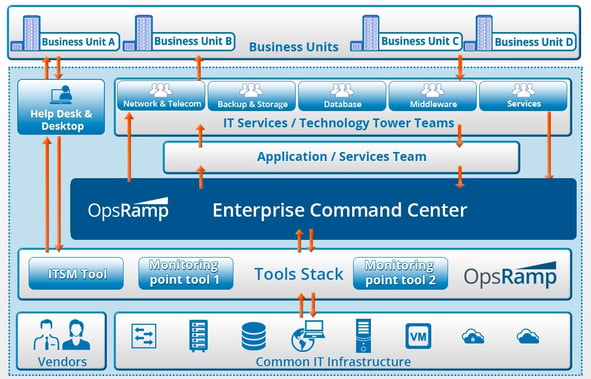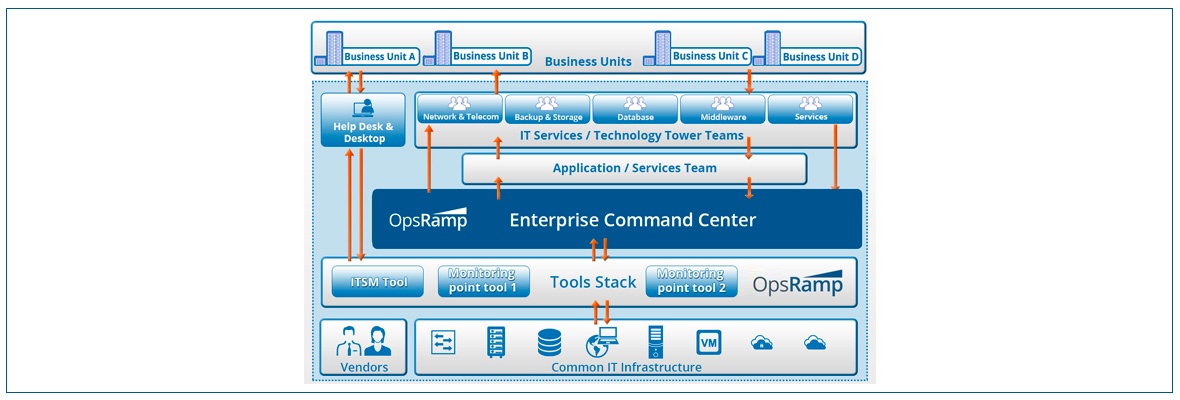An enterprise command center gives IT teams the situational awareness and tools to manage proactive and reactive issues that affect business services and operations.
From OpsRamp's engagements with enterprise customers, we've seen how command centers are structured and operated to realize benefits like productivity gains, business relevance, and lower mean time to resolution.

Figure 1 - Architecture of An Enterprise Command Center
- Business Units. As enterprise IT teams evolve to serve as internal IT service providers to their business units, a command center provides the platform to deliver and optimize these services in a multi-tenant way.
- IT and Application Services Teams. Whether enterprise IT is organized by technology towers, service categories or applications, multiple "tower" teams need to collaborate and have a consolidated view across their infrastructure to move fast enough to meet the needs of today's business. The enterprise command center provides the platform that teams can leverage to coordinate response and share common services.
- Tools Stack. Enterprises will have multiple IT operations tools in their stack, including ITSM tools and technology- or application-specific monitoring point tools. The command center integrates this myriad of tools into a single framework that leverages APIs and automation to consolidate alerts, events and metrics across tools to provide the right insights to drive action.
- IT Infrastructure. The enterprise command center has line of sight to all infrastructure, cloud and application elements that are used across the enterprise IT environment. The technologies may or may not be directly owned or managed by central IT, but is part of the integrated framework to provide enterprise-wide visibility.
- Vendors. With new models of working with service providers and vendors, the command center provides secure, role- and time-based access to external partners who provide IT services to the enterprise.
The command center is a framework that brings together these elements and enables the enterprise to consolidate management across their infrastructure, tool sets, IT teams and stakeholders.
You can’t afford to invest in a command center initiative that requires a multi-million dollar, multi-year implementation effort. Given the speed with which applications are evolving today, a command center needs to be assembled in a very agile manner. As applications and infrastructure change dynamically, your command center should automatically deliver visibility into what’s happening in your IT environment.





